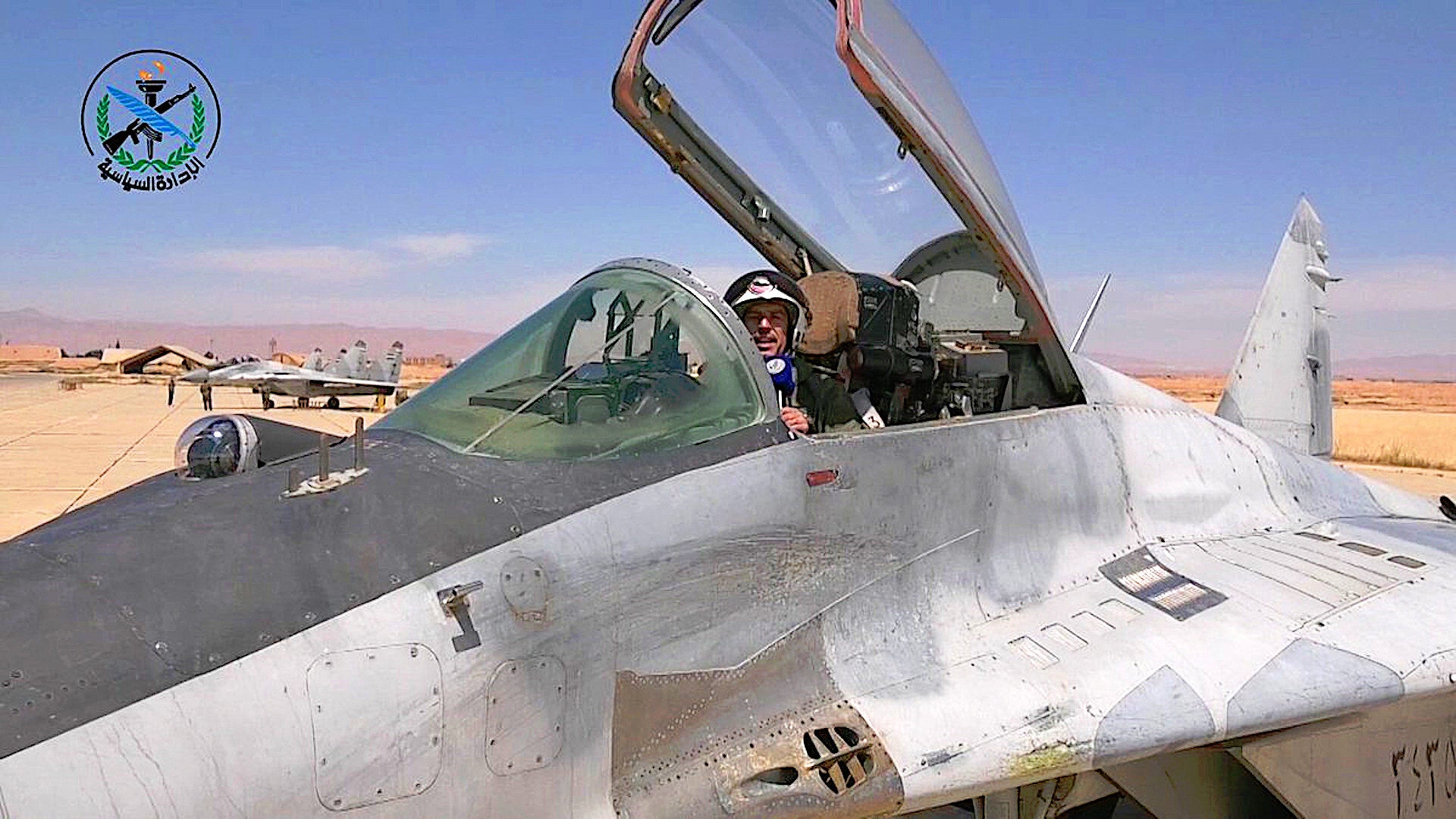Syria has released a number of video clips showing some of its MiG-29 Fulcrum jets. The unusually high-resolution footage offers a close look at how these jets are faring after years of conflict and sanctions and its safe to say that they look pretty beat up.
The Syrian Ministry of Defense posted these videos on its official YouTube page between May 5 and 6. The clips, along with a series of others where MiG-29s do not appear, feature various members of the Syrian armed forces making statements on the occasion of the country’s Martyrs’ Day, which falls on May 6 and honors the memory of Arab nationalists who the Ottoman Empire executed in 1916.
You can watch the three full videos that include statements from MiG-29 pilots below:



For what is clearly meant to be a show of national pride, the MiG-29s we see look to be in pretty bad shape. The jet that is the primary subject in all three videos has clear scrapes on its nose radome and a huge scratch along the left side of the fuselage underneath the cockpit.
The windscreen looks discolored and the canopy framing is scratched and roughed up around the edges There is also damage to the front of the left wing glove behind the firing port for its internally-mounted 30mm Gryazev-Shipunov GSh-30-1 automatic cannon. The firing port itself is visibly rusty.
There is significant corrosion on various portions of the aircraft. Parts of its two-tone gray camouflage scheme appear to have been hastily and irregularly touched up over the years and there is discoloration along panel lines all over the aircraft, too.
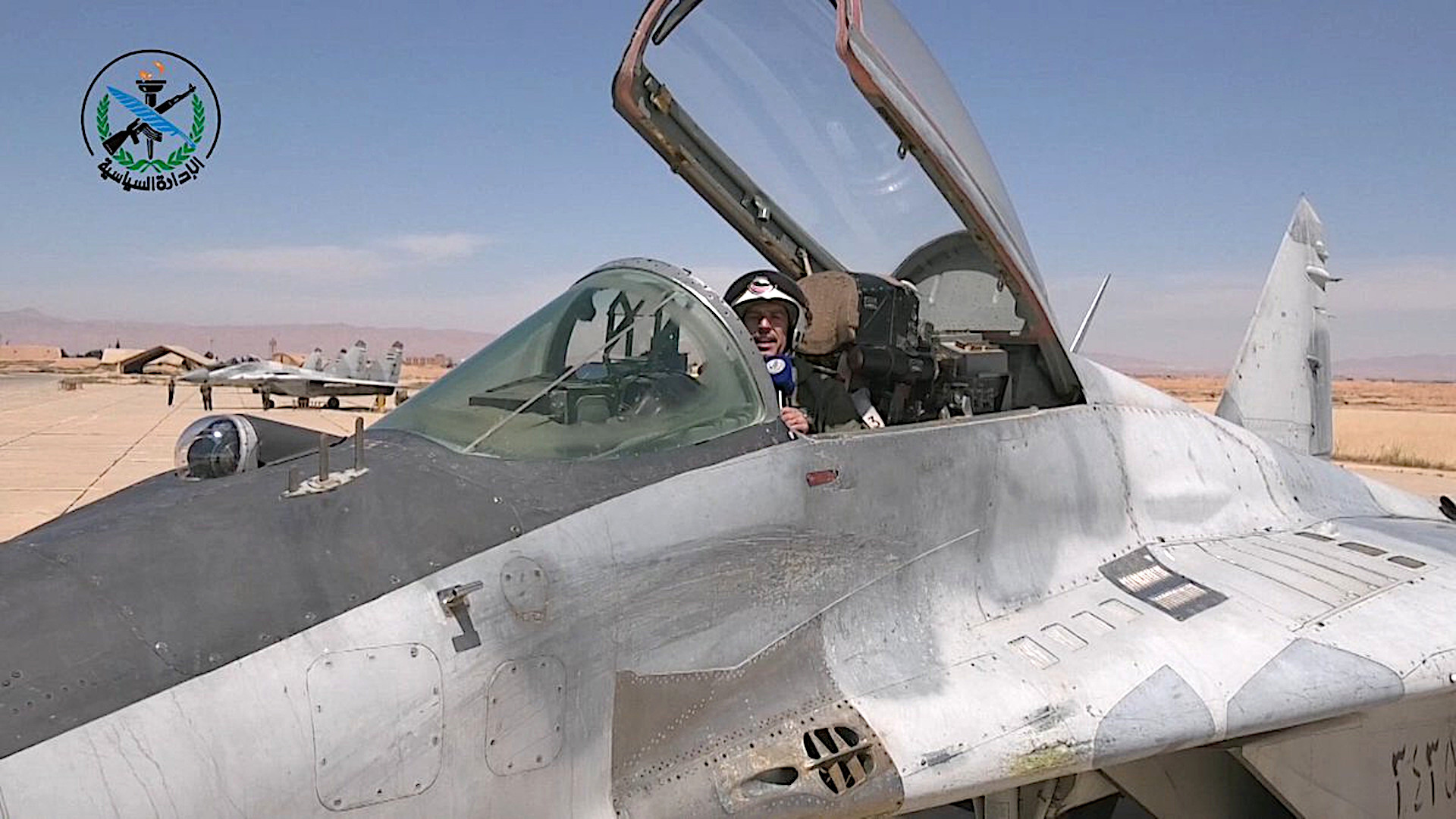
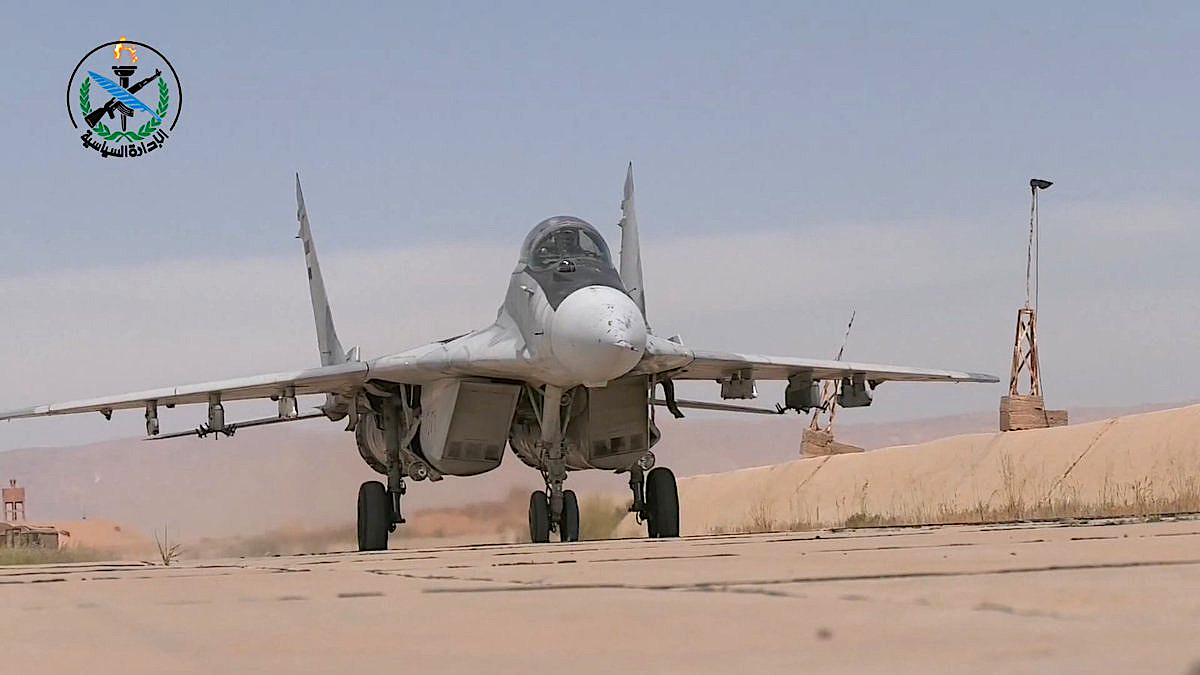
Another clip showing more of the underside of this particular aircraft show oil and exhaust stains in various areas. The treads on the main landing gear tires also have what could be striations on their surface, which would raise questions about how worn they might be. This could also just be areas where dust and sand were present and got wiped away.
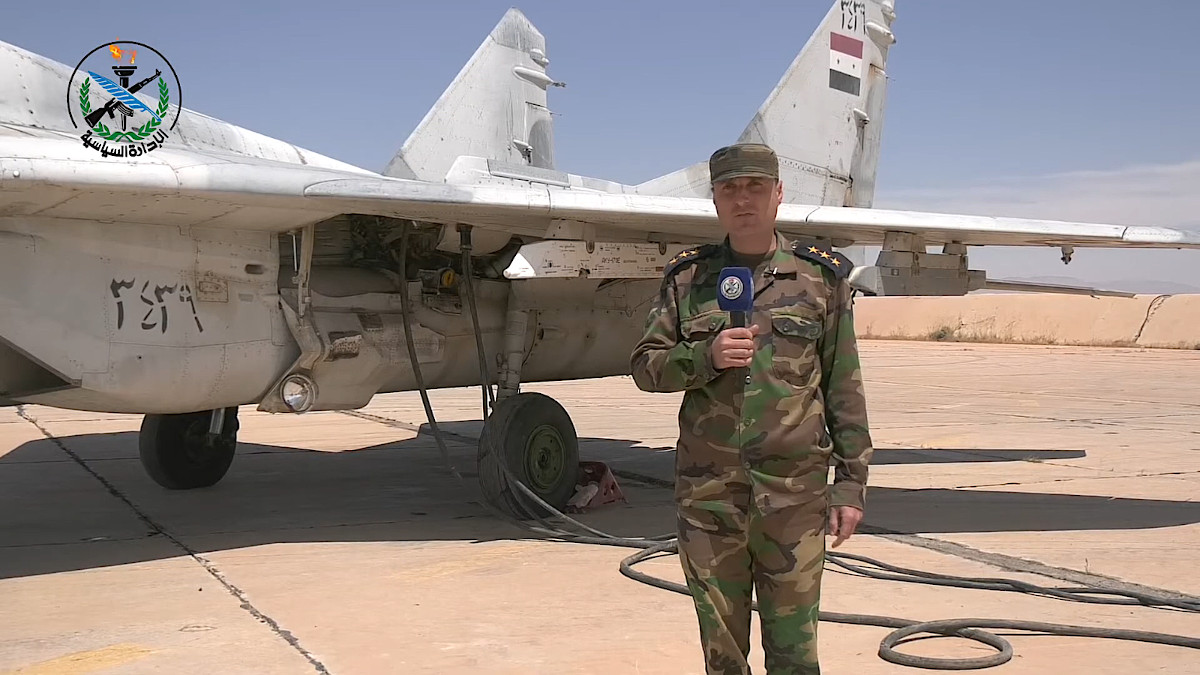
While some of what is visible could be categorized as normal wear and tear, the obvious damage and fouling on certain components is significant. Beyond that, the Syrian Ministry of Defense had to have deliberately chosen this particular aircraft to feature front and center in its official Martyrs’ Day footage, along with the others in the background that do not appear to be in much better states. One would imagine they would not have pick such a poor example to show off if there were better options readily available.
As such, the videos can only call into question the ability of the Syrian Air Force to operate and maintain the MiG-29s and other jets after nearly a decade of Civil War and skirmishes with foreign powers, such as the United States, Israel, and, most recently, Turkey. The Syrian military has lost significant amounts of men and materiel, including multiple combat jets, since 2011, including two Su-24s and one L-39 in fighting just this past February with Turkish and Turkish-backed Syrian forces. International sanctions can’t have helped, either.
Syria has also had a hard time getting new or even newish combat jets to replace its losses or otherwise bolter its fleets, to say nothing of modernizing them. Russia did supply a number of Su-24M2 Fencers to the Syrian Air Force starting in 2017, but plans to buy MiG-29SMT fighter jets and Yak-130 armed trainers have not materialized.
As such, Syria has only committed its MiG-29s sparingly in the ongoing fighting, using them at times to conduct limited strikes with their cannons and unguided rockets. The Syrian Air Force certainly hasn’t sent any of its Fulcrums, or any other combat jets, out to try to tangle with Israeli aircraft that have conducted strikes on targets in the country a semi-regular basis with near impunity in recent years.


It’s not even entirely clear how many of the Fulcrums the Syrian Air Force still had in its active inventory by the tie the country’s Civil War broke out. The Syrian government had acquired around 48 of the fighter jets, a mix of single-seat MiG-29A fighters and two-seat MiG-29UB trainers, from the Soviet Union in the late 1980s, with them formally entering service in 1989.
There is a report that a pair of Israeli F-15C Eagles shot down two of the Syrian Fulcrums in June 1989, but this has never been confirmed. Israeli and Syrian authorities have both denied reports of a nearly identical engagement involving another pair of F-15Cs and the shootdown of two more MiG-29s in 2001. In 2018, Syrian rebels also said they brought down a Syrian MiG-29, but this has not been confirmed.
Starting in 2011, Syria had also begun upgrading is MiG-29s, approximately 20 aircraft in total, with assistance from MiG in Russia, to a configuration similar in some respects to the modernized MiG-29SM. The single-seat MiG-29SM is based on the earlier MiG-29S, also known as the Fulcrum-C, which has a different airframe from Syria’s MiG-29As.
In order to bring Syria’s aircraft up to a standard at all similar to the MiG-29SM, MiG reportedly developed a new package based on the older airframe design. The updated Syrian jets reportedly have the more modern N019ME pulse-doppler radar, a larger overall payload capacity, improved navigation and communications systems, and upgraded cockpit displays.
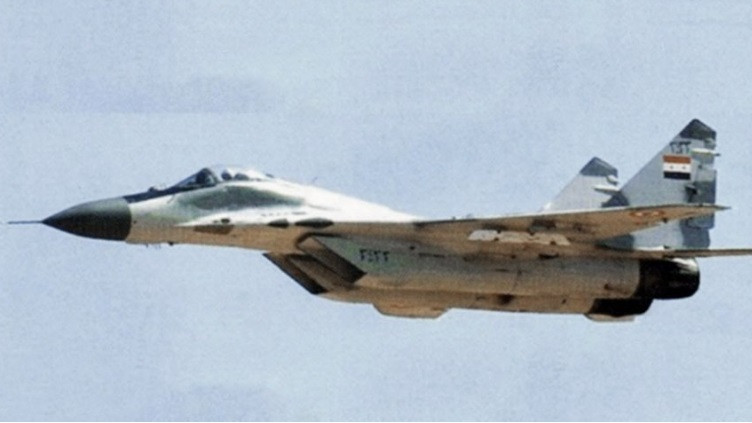
It’s not clear if all of Syria’s MiG-29s actually received the full set of upgrades. It’s unclear if Syria’s improved MiG-29s have the ability to employ Russian precision-guided munitions, which standard MiG-29SMs can. Even if they do have this capability, there’s no indication that the Syrian Air Force has any significant stocks of those weapons or that is has employed them operationally, if it has any of them at all. By every indication, Syrian combat aircraft have only employed unguided bombs and rockets in its largely indiscriminate air campaign against militants opposed to the regime of Bashar Al Assad, as well as civilians in areas where those groups operate.
The updated jets that did get updated did gain the ability to launch R-77 air-to-air missiles and have been seen carrying the launch rails necessary to fire those weapons. In addition, Syria has acquired a number of Talisman self-escort jamming pods from Defense Initiatives in Belarus.

The state of Syria’s MiG-29 fleet has already been in question after a mishap in March. That jet apparently suffered a technical malfunction of some kind shortly after takeoff causing the aircraft to crash, killing the pilot. This was the first-ever confirmed loss of a Syrian MiG-29. One can only wonder if the general condition of the aircraft and the Syrian Air Force’s maintenance capacity may have been contributing factors in that accident.
It’s hard to imagine any of Syria’s MiG-29s in this condition, especially non-upgraded ones, will be able to soldier on much longer without serious maintenance work.
Contact the author: joe@thedrive.com
